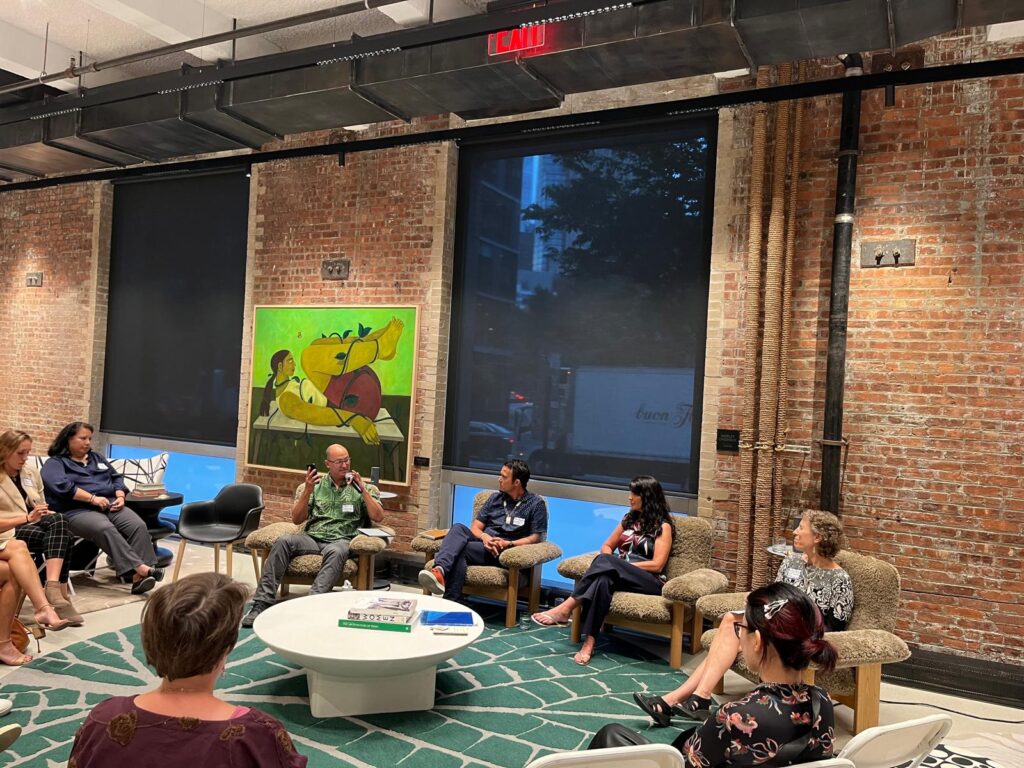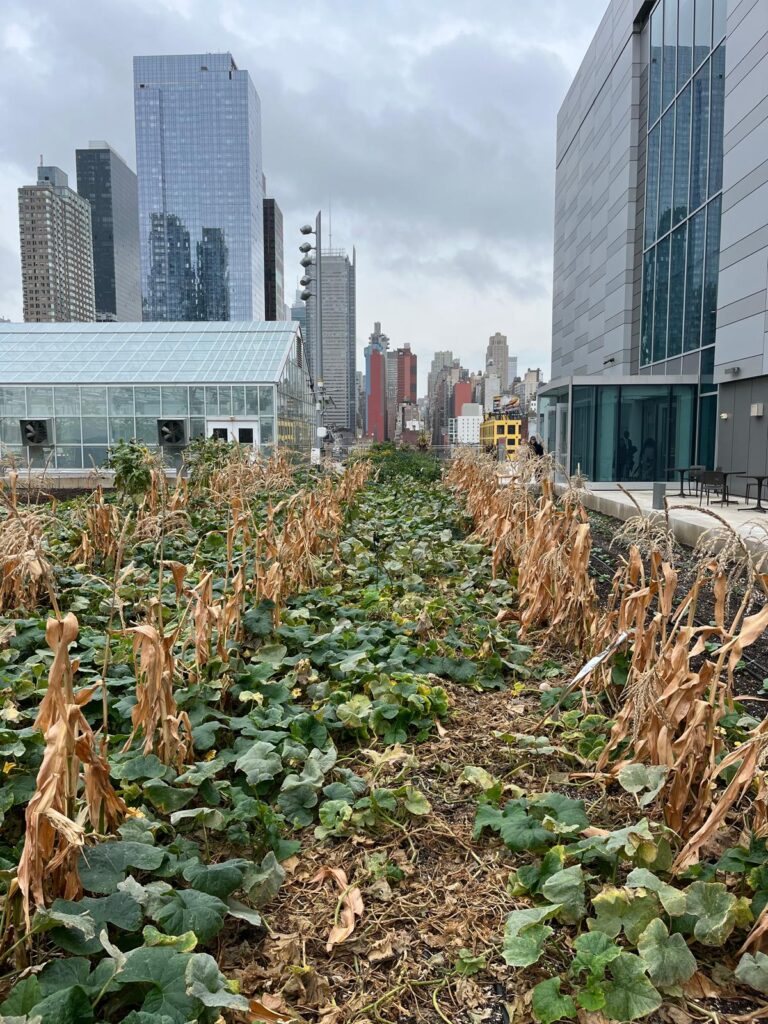By Daniel Moss, Co-Director, Agroecology Fund
It was quite a jolt to move from an agroecology learning exchange among hundreds of small farmers and advocates in Zimbabwe to the monied terraces of New York City where thousands gathered for Climate Week NYC 2024. And I was born in New York! I couldn’t help but wonder what it might have felt like for a Maasai pastoralist leader entering this dizzying universe for the first time, trying to assess the dynamics to know how to best advance a rights-based climate resilience agenda?
The week was a whirlwind with more than 600 events and social gatherings. There were so many interesting conversations about both the challenges and opportunities that lie ahead, especially around food systems transformation. And while the momentum and energy of the event produced a sense of hope and inspiration, it also raised concerns about how we think about change.
A bit more about the both/and:
Community-led Conservation and Indigenous Food Systems
At an event hosted by Maliasili and Synchronicity Earth, conversation built on the findings of a new report, “From Pledges to Practices: Shifting Conservation Funding Approaches to Better Support Local African Organizations”, which presented troubling data about underinvestment in community-led conservation. This session aimed to encourage more and better funding for African conservation and climate organizations working on community-led solutions.
The top-line message was loud and clear: “Despite growing momentum for improving climate and conservation funding that flows to Indigenous and local organizations, shifting those pledges into practice – e.g., money into the hands of local actors – has been limited.” Speakers observed, with a bit of nervousness since it’s a sensitive topic, that colonial patterns have been hard to break and BINGOs (big international NGO’s) tend to receive the majority of funding.
Present was Agroecology Fund grantee partner IMPACT Kenya—which champions Indigenous resilience by securing land rights, fostering sustainable livelihoods, and nurturing ecosystems. Of particular interest to me was how pastoralist’s conservation strategies are inextricably linked to agroecological strategies to preserve Indigenous food systems. There is much urgency to collaborate at the nexus of food and conservation and to ensure that local organizations and their representative networks have the resources they need to further this critical, inter-sectional work.
Investing in Indigenous-led Climate Solutions
“Investing in Indigenous-led Climate Solutions,” was an event co-hosted by Collective Action for Just Finance, the International Funders for Indigenous Peoples, the Christensen Fund and Confluence Philanthropy. Moderated byJen Astone, Agroecology Fund’s Agroecological Entrepreneurship & Territorial Markets consultant, it wove together a conversation among Ben Jacobs, Co-founder & President Tocabe, Chrystel Cornelius, President & CEO, Oweesta Corporation, and Keoni Lee, CEO, ‘Aina Aloha Economy Fund, Hawai’i Investment Ready.
Panelists discussed how to leverage investment and grants to support Indigenous communities in their efforts to adapt to and mitigate climate change. Each shared culturally-affirming business models and approaches to investing in Indigenous communities using holistic investment strategies, including trust-based financing which required no collateral, and rights-based approaches to housing, green energy, and healthy foods.

Listening to these cases, I couldn’t think of a better scenario for impact investors seeking climate-friendly investments with powerful equity outcomes . “Impact Investing” was a common refrain during Climate Week and so throughout my time there. I was mystified by why amazing climate-friendly, triple bottom-line enterprises like these continue to have difficulty obtaining the financing they need. U.S. foundations sit on billions of endowment dollars that could be invested in these Indigenous-led solutions. Why does this gap still exist?
The Agroecology Fund will continue to seek ways to stimulate the flow of capital—from public, private, and multilateral sources—into community and Indigenous-led climate enterprises.
Celebrating Indigenous Philanthropies and Power
On two evenings, lifted to the heights of Manhattan’s skyline in ear-popping elevators, I joined powerful celebrations of Indigenous-governed institutions providing essential support to their communities. The first gathering was a 10 year celebration of the Pawanka Fund. Pawanka is an Indigenous-led fund, “promoting and protecting traditional knowledge, wellbeing, rights and self – determined development.” Led by a guiding council, Pawanka has granted over $18 million to Indigenous-led organizations in dozens of countries. I had first met Miskito leader and Pawanka Founder, Myrna Cunningham, 40 years ago in Puerto Cabezas, Nicaragua and finished the evening awed by the stories of the Fund’s deep impact on Indigenous communities.
The next night, the NDN Collective, which applies a mix of organizing, activism, philanthropy, and grantmaking to create “sustainable solutions on Indigenous terms” celebrated their work on a terrace lit by the Empire State Building, an iconic landmark in the ancestral territory of the Lenape people. Earlier in the day, NDN had held a donor workshop about their Landback campaign, exploring how Indigenous land stewardship and rights can drive climate justice and community-led conservation. Just prior to Climate Week, the NDN team had met with elected officials and governmental agencies to raise issues around climate, police violence, and more. There, Janene Yazzie, Director of Policy and Advocacy at NDN, stated “Indigenous Peoples hold a wealth of knowledge around how to build sustainable systems that allow everyone to be safe and free – and we will continue to uplift that knowledge until those systems are in place.” NDN is a close collaborator with the Agroecology Fund’s long-term partner, the International Indian Treaty Council.
Fossil Fuel Companies Double Down on Plastics, Pesticides and Fertilizers
As alternative energy solutions accelerate, fossil fuel companies pivot into increased manufacture of derivative products, such as pesticides, fertilizers and plastics. A recent damning article describes a criminal PR campaign to downplay pesticide risks, financed with US taxpayer support. At a gathering on agrochemicals convened by the Global Alliance for the Future of Food and the ClimateWorks Foundation – essential allies of the Agroecology Fund – we discussed the challenges of countering the narrative that chemical inputs have been nothing less than a “modern miracle” with no downside. Jane Fonda, showing up as an activist and cancer survivor, spoke powerfully of the impact of pesticides produced in Louisiana’s cancer alley and the urgent need to remove petrochemical corporations’ social license. The corporate concentration, vertical integration and lobbying weight is daunting but the focus by activists, donors, and government officials provides an essential counterbalance. Rob Bonta, California’s attorney general, described his office’s lawsuit against Exxon-Mobil accusing them of contributing to plastic pollution. A good portion of the session focused on manufacture of bio-inputs and ways to restore healthy soils to obviate the need for chemical fertilizers. The Agroecology Fund is proud to support the “true miracle” – grassroots enterprises and advocacy across the world that leave people and the planet healthier.
The Hazards of Global Gatherings
Deliberations on climate change and related planetary crises are increasingly marked by a series of high visibility events that you can find on a calendar – Conference of Parties (COPs), Climate Week, etc. Over cocktail plates of hummus and celery stalks, one might start to believe that these spaces are where change occurs. And to be fair, they do have immense value: Relationships are fortified, collaborations are incubated, deals are struck and critical information about false solutions such as green ammonia are shared. But there are dangers to organizing ourselves around these moments. Since these are exclusive gatherings – we can’t all afford to be there – the grassroots actors who tirelessly organize grassroots constituencies and advocate with local and national policy makers are easily invisibilised. While these global events can be important, they contribute more forcefully to a democratic groundswell for climate justice when sufficient resources are allocated for the grassroots work before and after these events. Perhaps more concerning is whether these events fan an inflated sense among global gathering attendees that they are the primary change makers, rather than the people back home, much closer to the ground. Too infrequently did I hear invoked and lifted up the names of climate champion organizations and networks – the landscape stewards, food producers and grassroots activists. Trust-based philanthropy should ensure that these champions are entrusted with adequate resources for their work. We all benefit from their leadership.

Food Systems Everywhere
Finally! Food systems have arrived in climate conversations. Once ignored, food is gaining prominence. At a gathering entitled, “Unlocking Catalytic Investments for Regenerative Agriculture Transitions” co-sponsored by the Global Alliance for the Future of Food and the Rockefeller Foundation, Ana Terra, from Brazil’s National Secretary of Supply Cooperativism and Food Sovereignty, Ministry of Agrarian Development and active in Brazil’s powerful social movements, spoke about the success of public procurement for healthy school food program, which incentivizes thousands of agroecological producers who, in turn, regenerate climate-resilient landscapes. Learning about this work, one can see that with the right pressures and policies, profound changes can quickly occur.
That night, mesmerized by Times Square neon pitching products that push us closer to climate collapse, I thought about the work ahead. No doubt the logistics will be complicated to provide all those NYC pizza parlors with agroecologically-produced tomatoes and cheese. But it can be done. Harder still will be to redirect the billions of dollars flowing toward climate solutions away from techno-fixes and towards truly just and sustainable solutions. But with a powerful imagination and a powerful climate justice movement, I’m pretty sure we can do that too.
